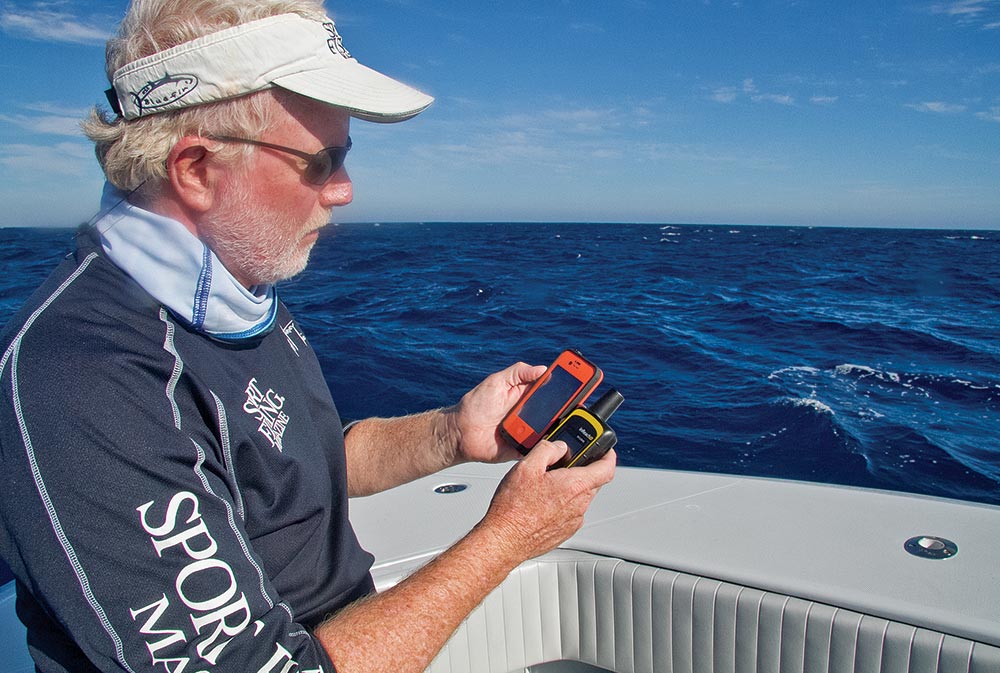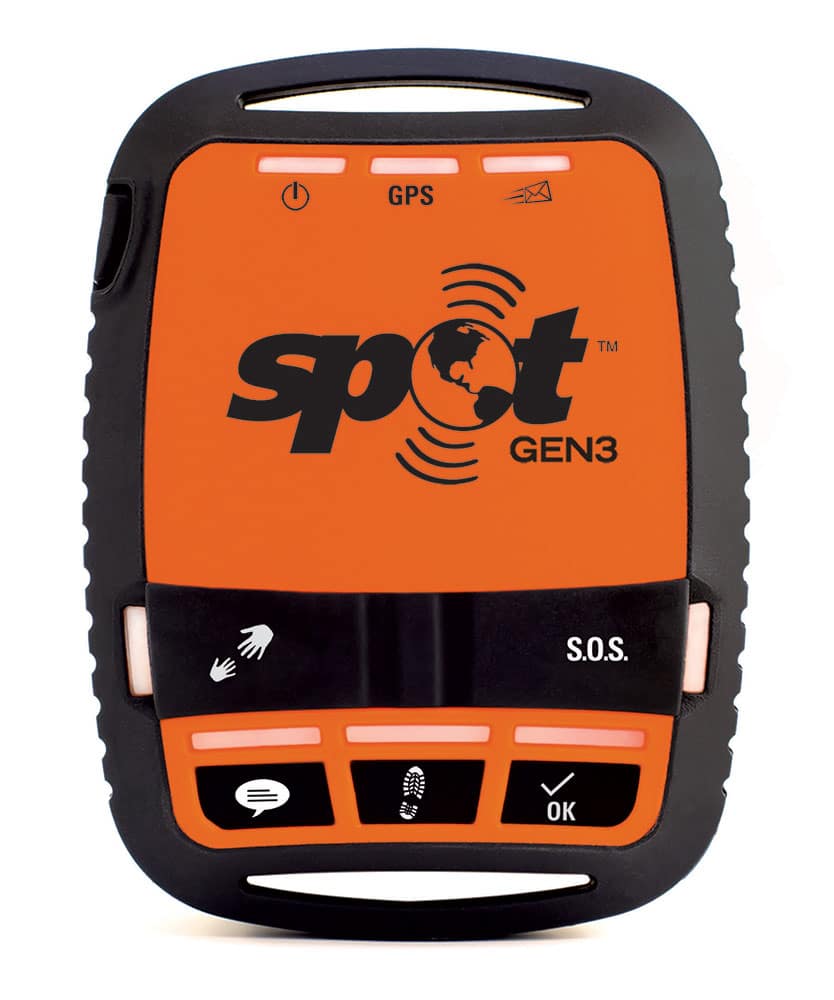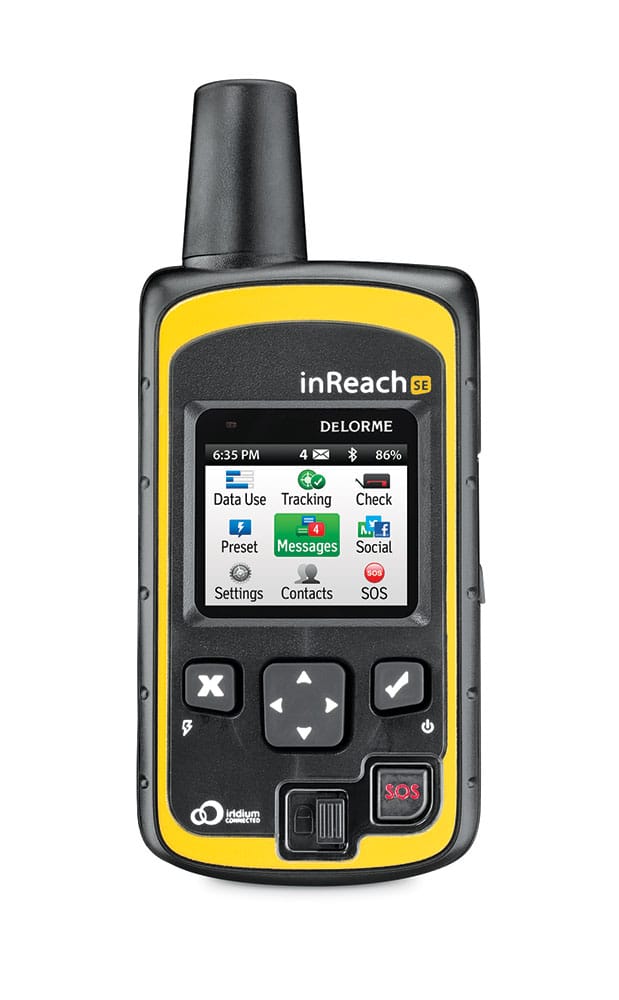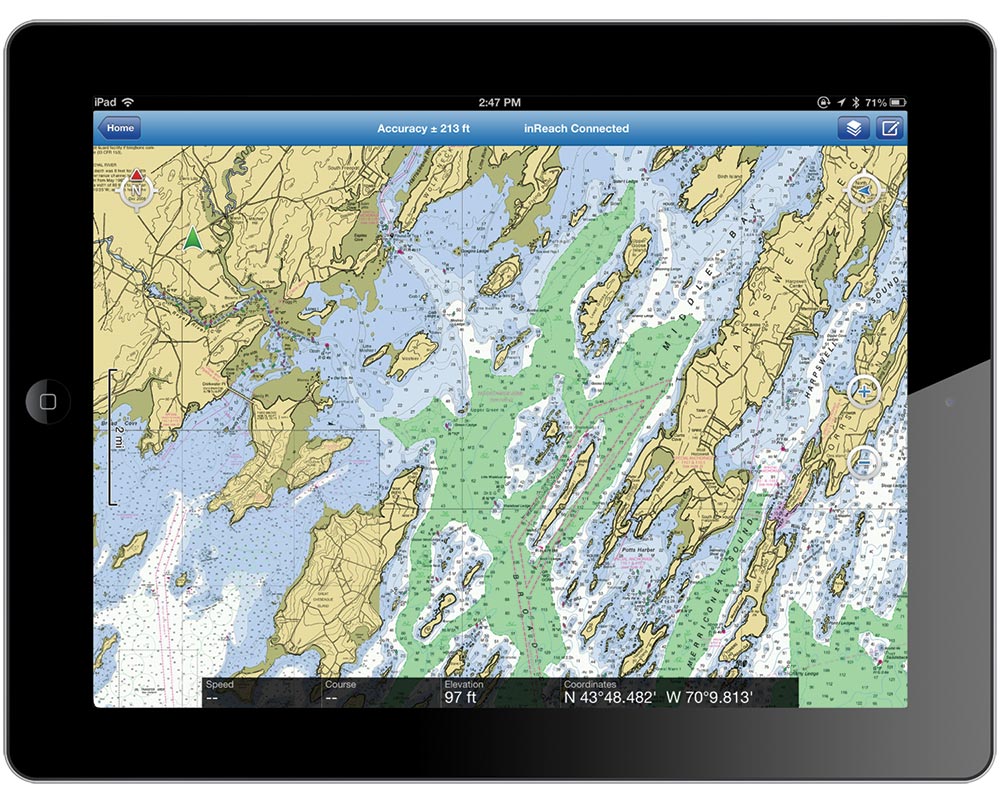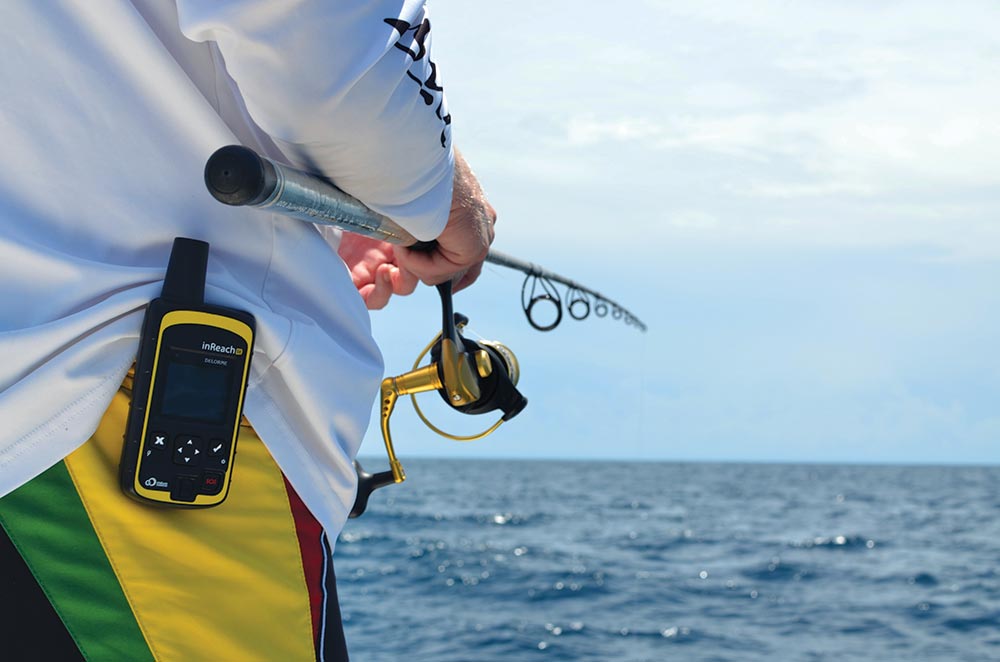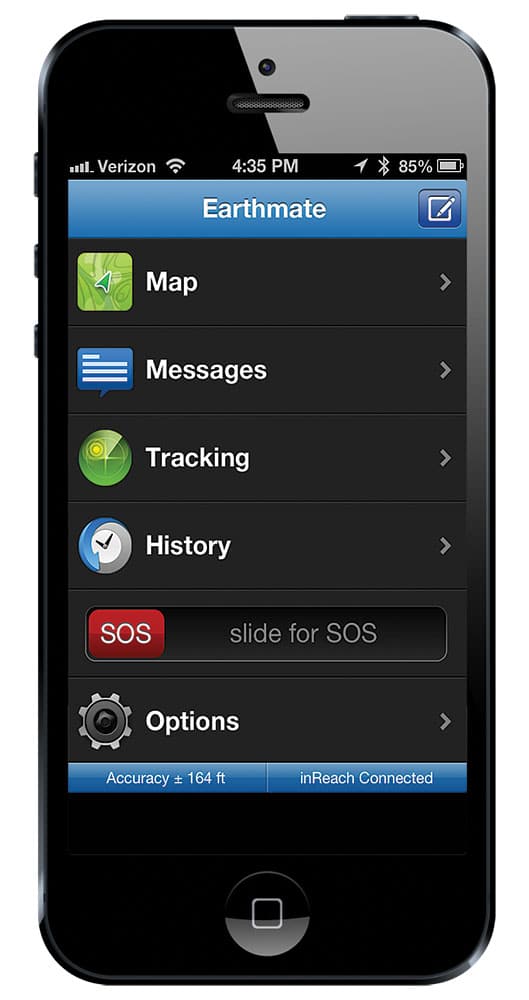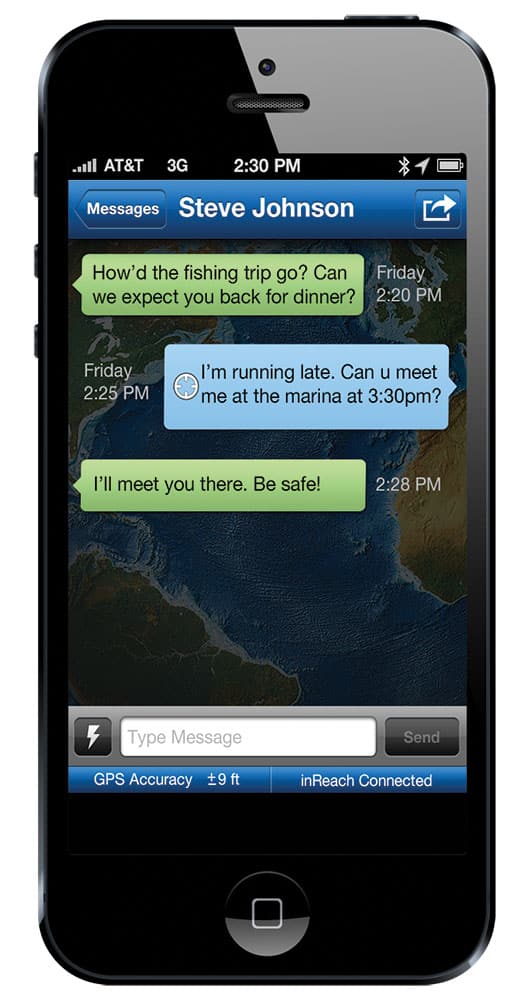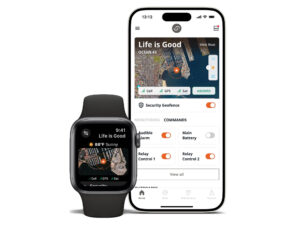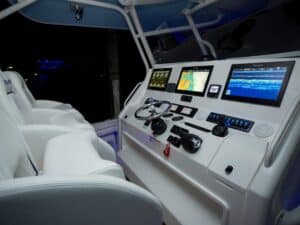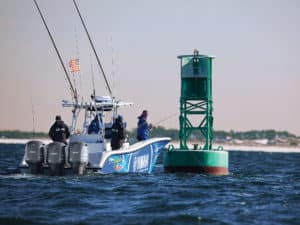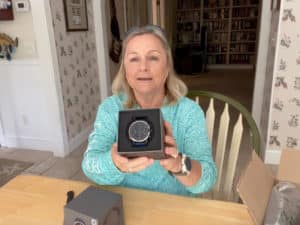(Be sure to click through all the images in the gallery above.)
Eons seemingly compress into moments in the world of marine electronics. In six short years, SPOT — introduced as the world’s first satellite messenger in 2007— has become the cornerstone for a whole new category of electronics called SENDs, satellite emergency notification devices.
SENDs incorporate fun features like social-media sharing and route tracking into a very powerful safety device with SOS and other help functions. In the past several years, competitors like DeLorme’s inReach, Yellowbrick’s Yellowbrick3 and Briartek’s Cerberus have joined the global SEND market. In the United States, SPOT (findmespot.com) and inReach (inreachdelorme.com) currently dominate.
Safety Focus
SENDs differ from emergency transmitters like Personal Locator Beacons and Emergency Position‑Indicating Radio Beacons in several ways, says Kim Stiver, vice president of marketing for DeLorme. But chiefly, PLBs and EPIRBs communicate through the international COSPAS-SARSAT satellite network, which has been jointly operated by the United States, Canada, France and Russia since 1988. SENDs use commercial satellite-communication providers such as Globalstar and Iridium.
With PLBs and EPIRBs, the signal relays to national Rescue Coordination Centers that dispatch regional rescue providers. With SENDs, the signal relays to a private response-coordination center in Houston — GEOS — which alerts the same regional responders. GEOS (geosalliance.com) says on its website that it began offering services — which now include worldwide search and rescue, monitoring, and global medical evacuation — since 2005.
When anglers buy a PLB or EPIRB, they must register it for use. In addition, not all such units come with internal GPS for real-time tracking. On the plus side, deploying one of these devices doesn’t cost you for airtime.
If you use a SPOT or inReach device, you pay a monthly or seasonal fee after purchase, but you can also send (and in the case of inReach, receive) text messages — usually pre-prepared — post to social media, and allow your family and friends to follow your trip on an online map.
“SPOT is a communication device first and foremost,” says Rich Galasso, a regional distribution manager for SPOT and Globalstar. “There are hurdles for PLBs and EPIRBs: People don’t want to pay for safety.”
Space and Time
DeLorme says its inReach provides complete global coverage, while Galasso says SPOT can signal from about 95 percent of the places on Earth where people live, work and play. Both products quickly transmit a trackable signal that cuts down on response time.
The inReach, however, is currently the only two-way SEND available. Not only can you send a 160-character text message to family and friends, but they also can message you back through an online interface or from their mobile device. When the device sends an SOS, “you will get delivery confirmation,” Stiver says. “You will know your SOS has been received. The device is monitored 24/7 by GEOS. They receive the signal and text you back. They can ask if it’s a real SOS and ask the nature of the emergency in order to dispatch the appropriate resources in the most timely manner.”
Since SPOT is owned by Globalstar, its two-way communication device is a satellite phone. Dialing 911 on a SPOT Global Phone routes you directly to GEOS (as does hitting an SOS button on Iridium’s Extreme satellite phone). SPOT also sells its one-way Connect device, which pairs with your smartphone via Bluetooth to offer all of the SPOT functions, plus the ability to custom-type and send a message up to 41 characters to people within your chosen portfolio.
DeLorme added an actual color display screen and virtual keyboard on its new inReach: the Screen Edition. With Delorme’s free app, you can wirelessly pair your smartphone to the unit, and compose a text or email, and access maps.
The original inReach operates on AA batteries. Battery life while transmitting one tracking point every 10 minutes is 125 hours with lithium batteries, and less for alkaline and nickel-metal hydride. The new inReach SE comes with an internal, rechargeable lithium battery for about 100 hours of operation at the 10-minute tracking interval.
SPOT units run off AAs, and the latest third-generation messenger — SPOT Gen3 — has bumped up battery life to 264 hours in distress mode.
SPOT Gen3 units start at $149.95; annual plans start at $149.99. The inReach SE costs $299.95; monthly plans start at $9.95 (or about $120 a year). EPIRBs cost $500 to $1,000, and PLBs cost $250 to $500, though neither requires an ongoing airtime plan.
Satellite phones cost $500 to $1,500, with airtime plans packaged and sold in a wide variety of ways. SPOT advertises plans as low as $.25 per minute.
Moving Forward
DeLorme says the new inReach SE will be its standard hardware device for at least a few years. However, Stiver says additional features and services will roll out next year — “being able to drop waypoints, for instance. There’s so much we can do with the current -hardware structure.”
Galasso says SENDs might one day dominate or even completely take over the SOS market. SENDs are already outselling PLBs. “The Radio Technical Commission for Maritime Services (an international group that develops standards) sees that potentially in the future, the government system doesn’t even exist and private enterprise can take over this world,” he says. “PLBs and EPIRBs are excellent products, but the end user becomes the weak link in the process. We can add all these valuable features, and people are gravitating to us.”
